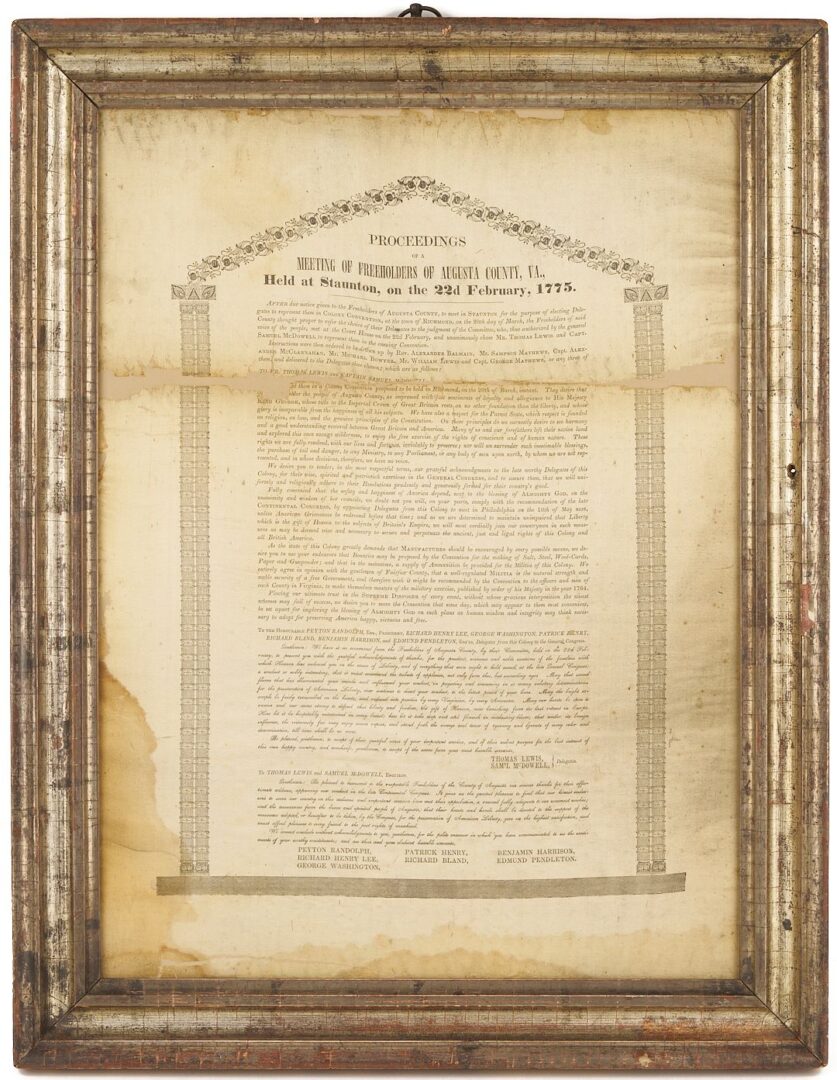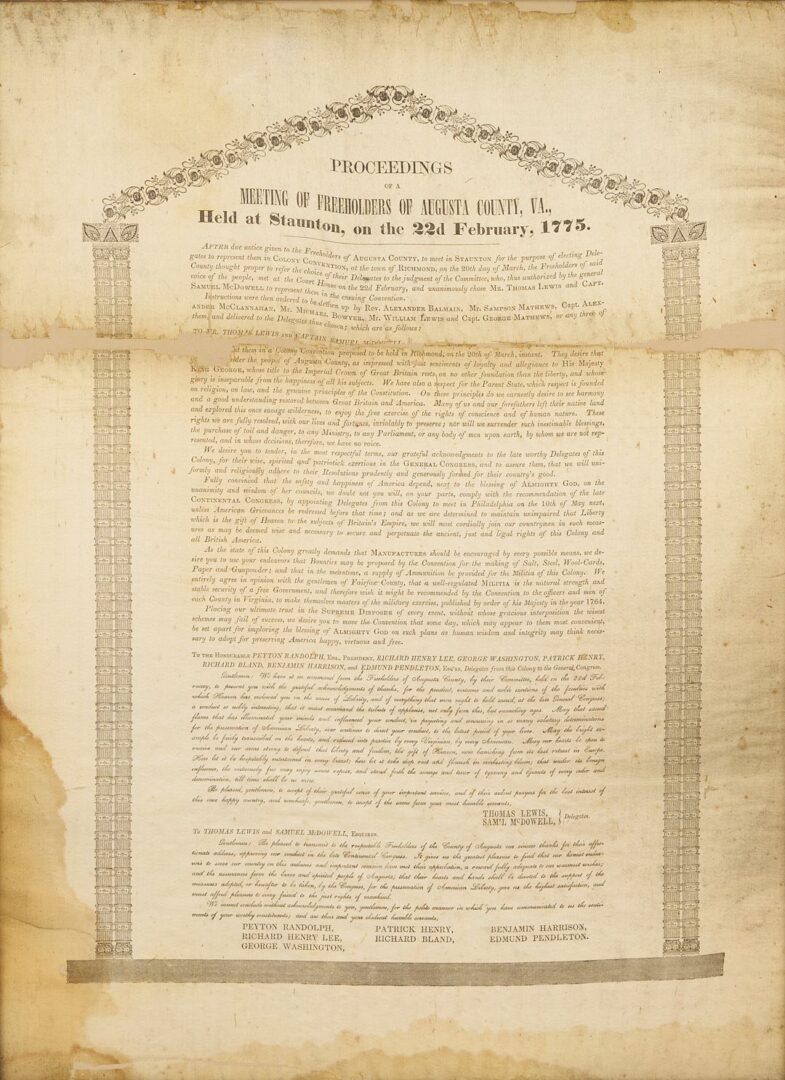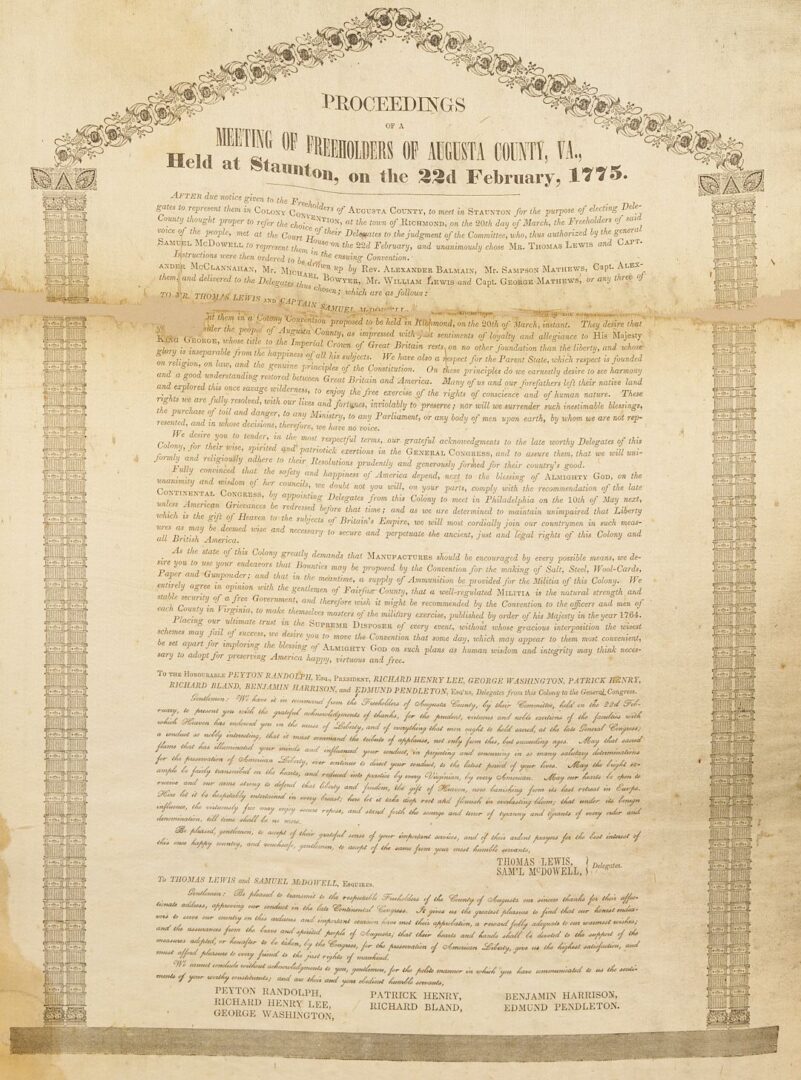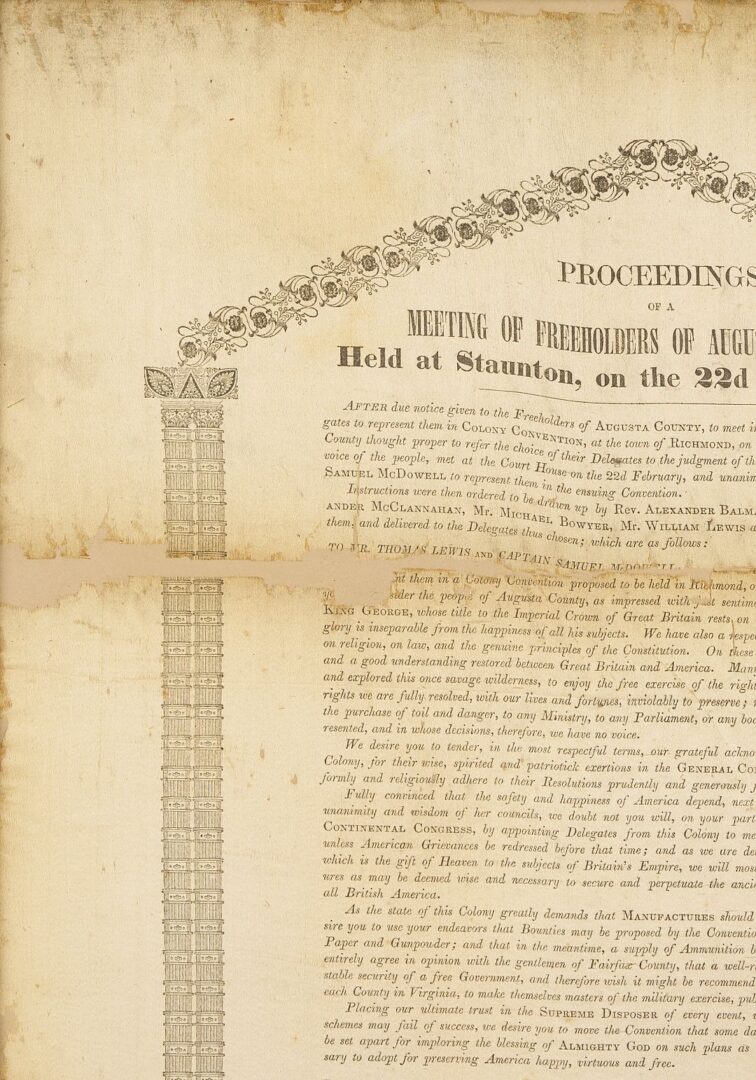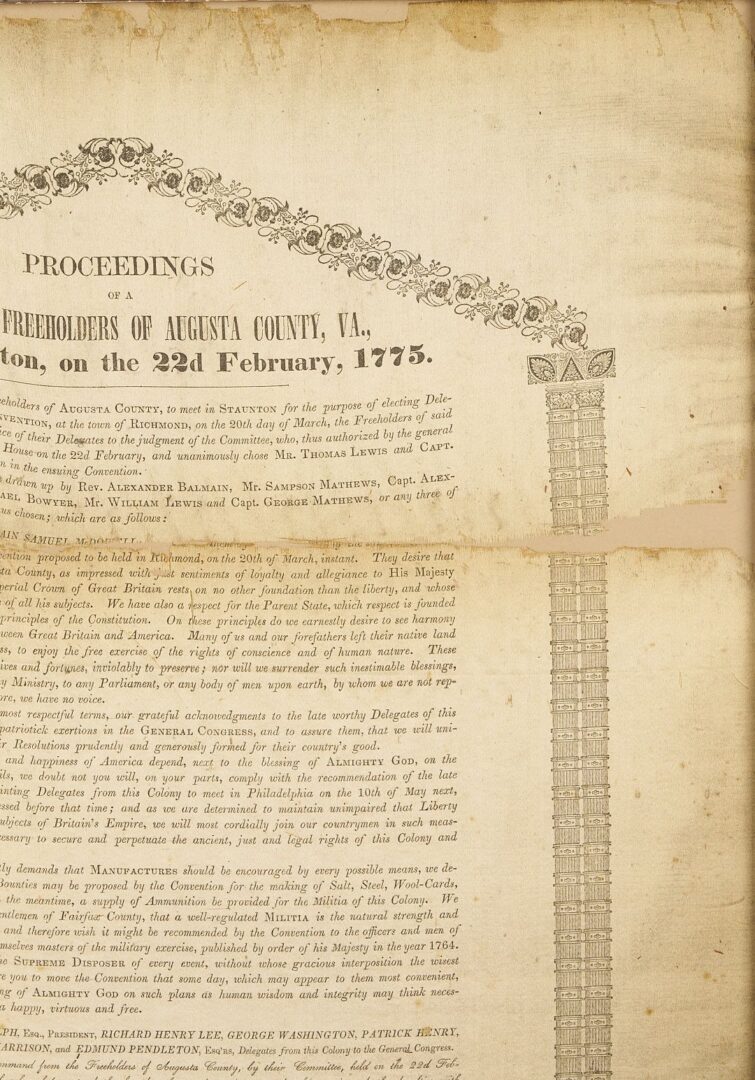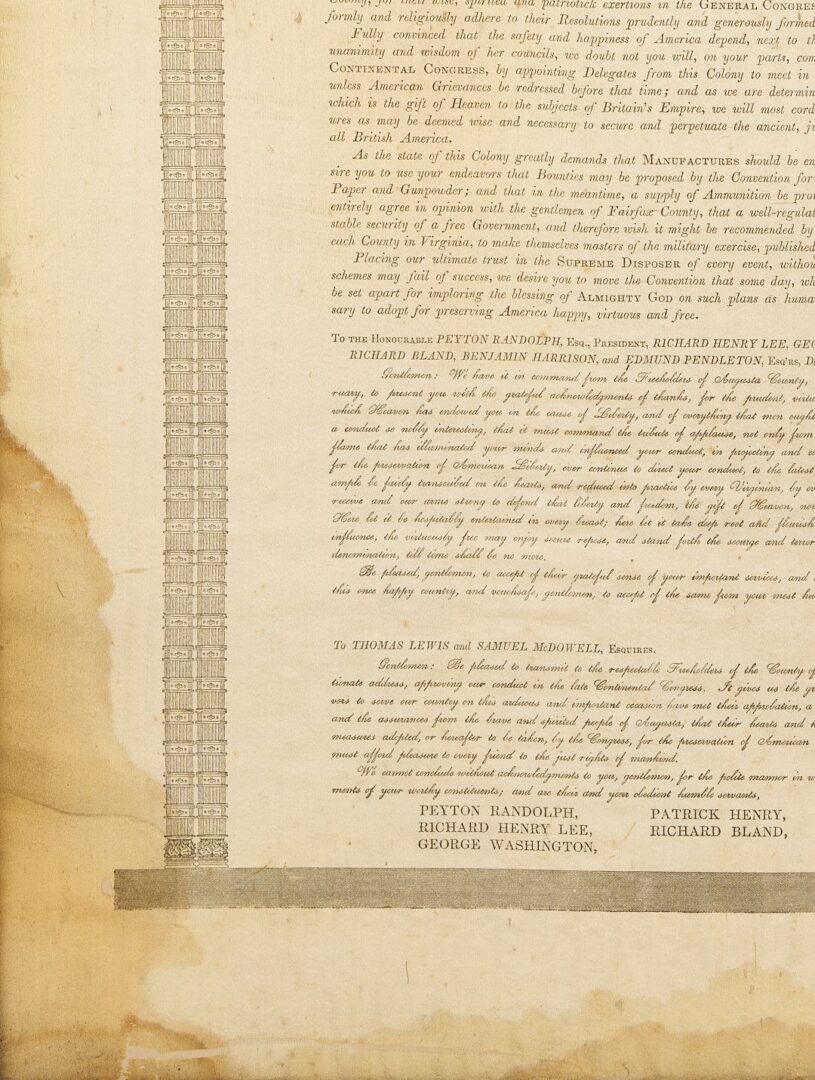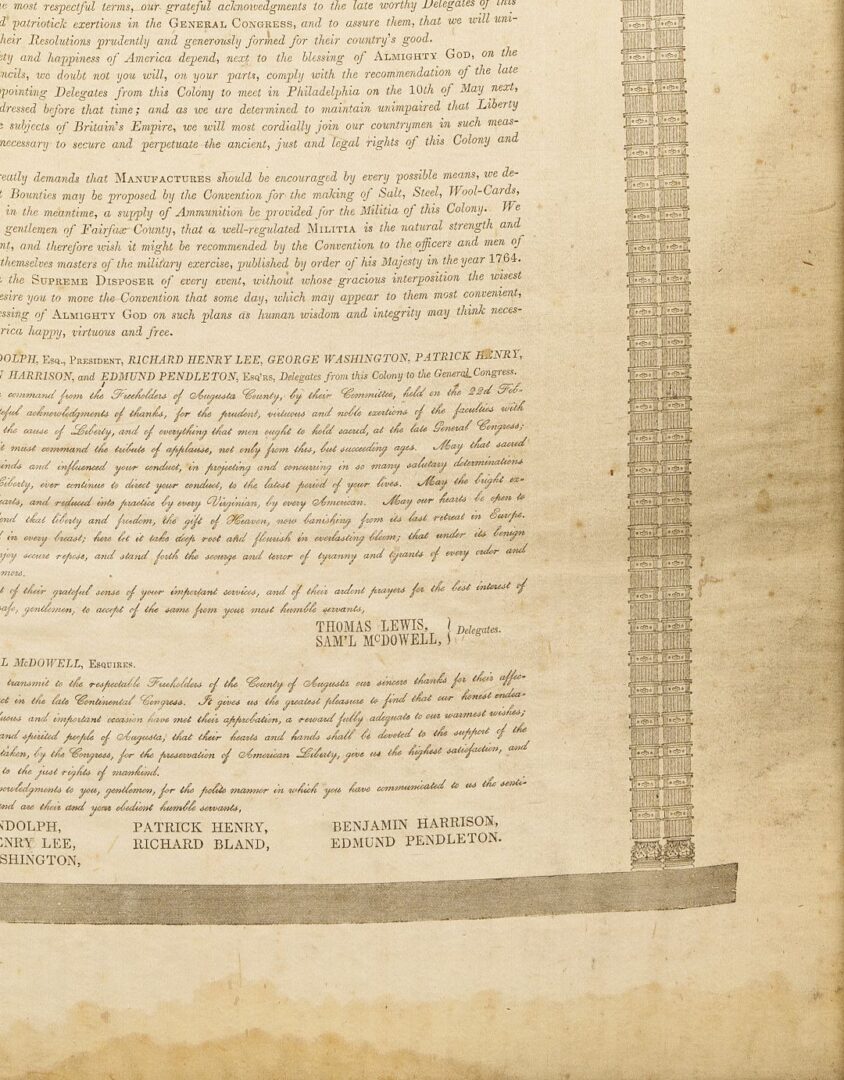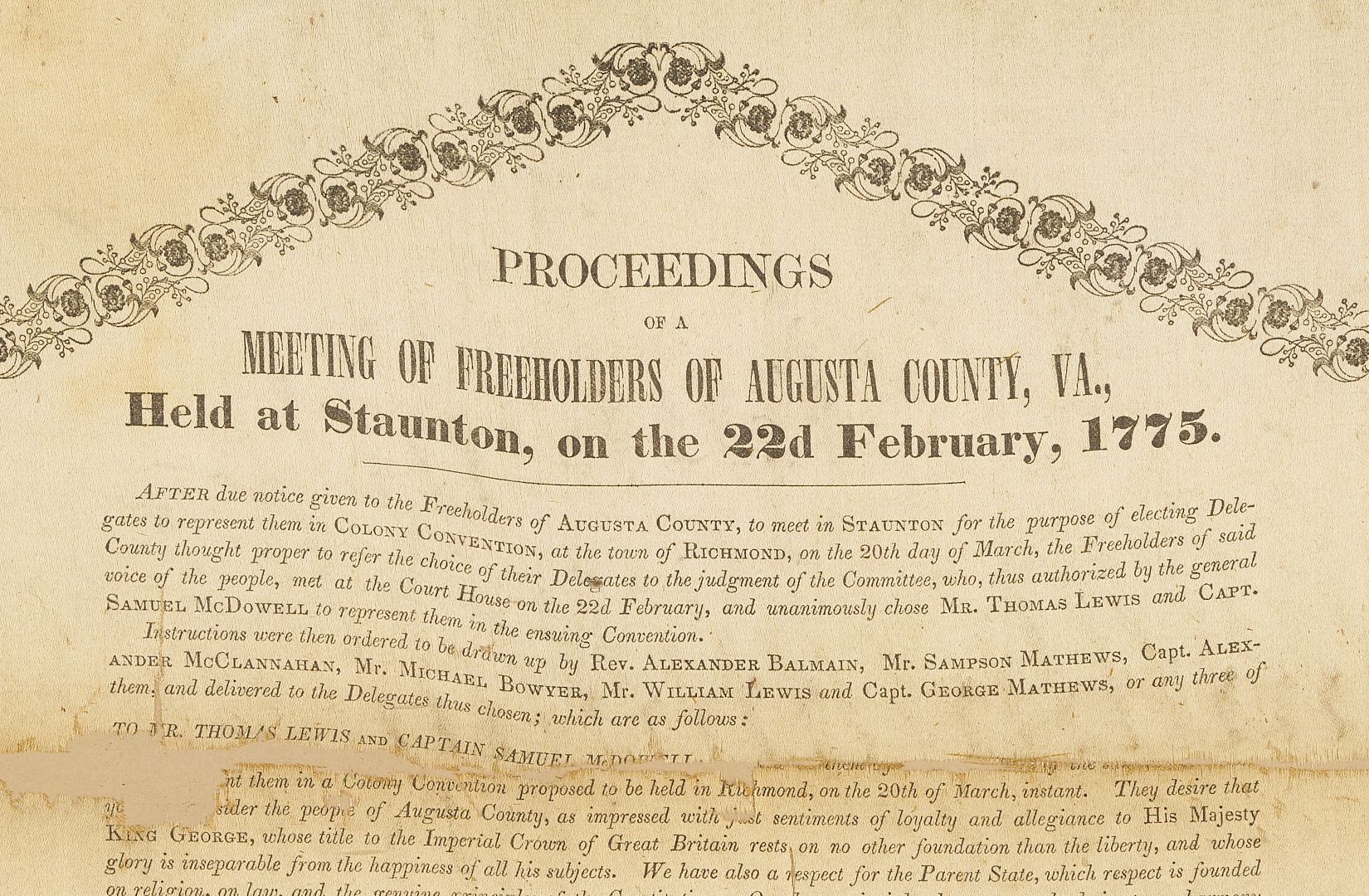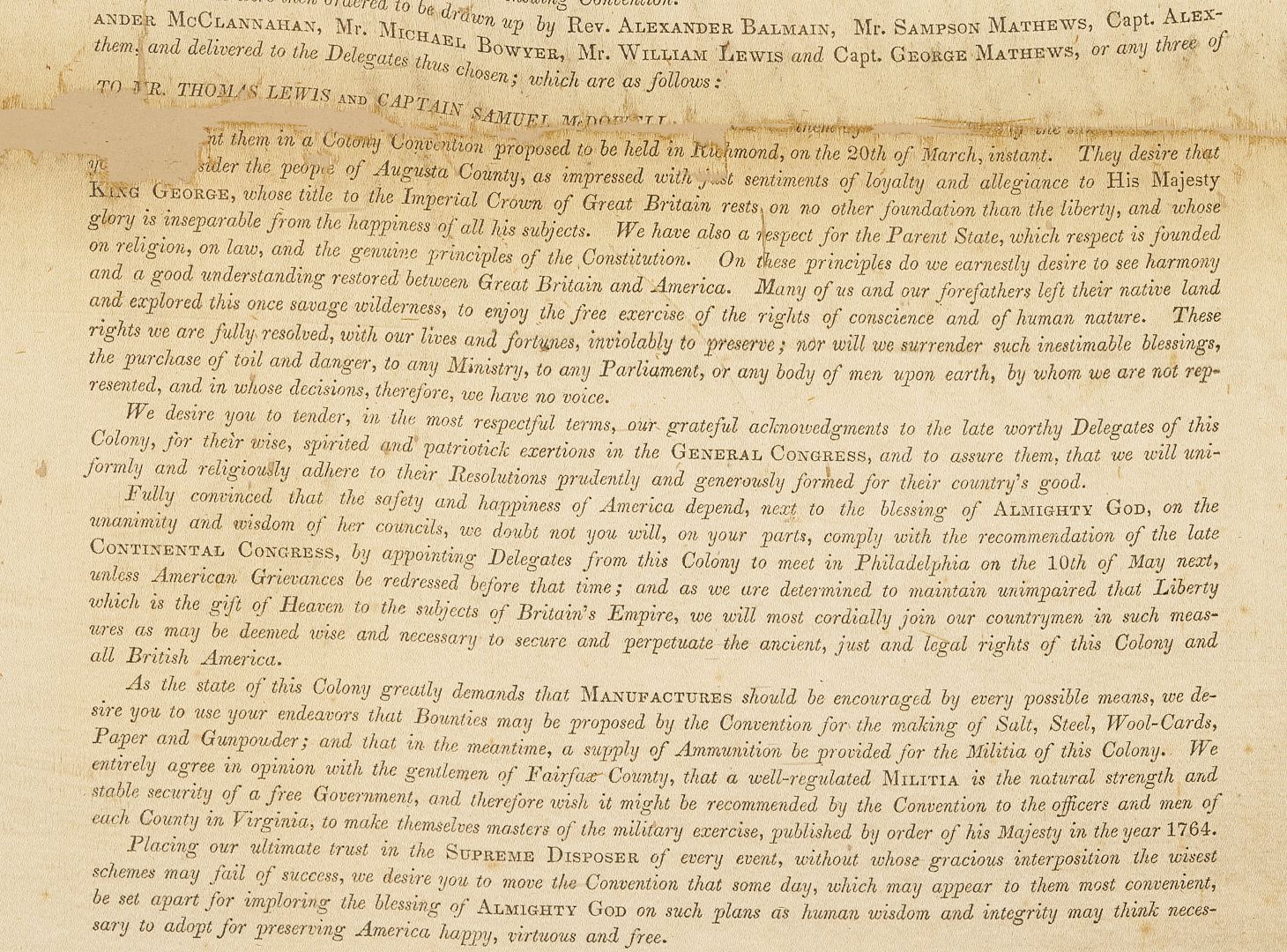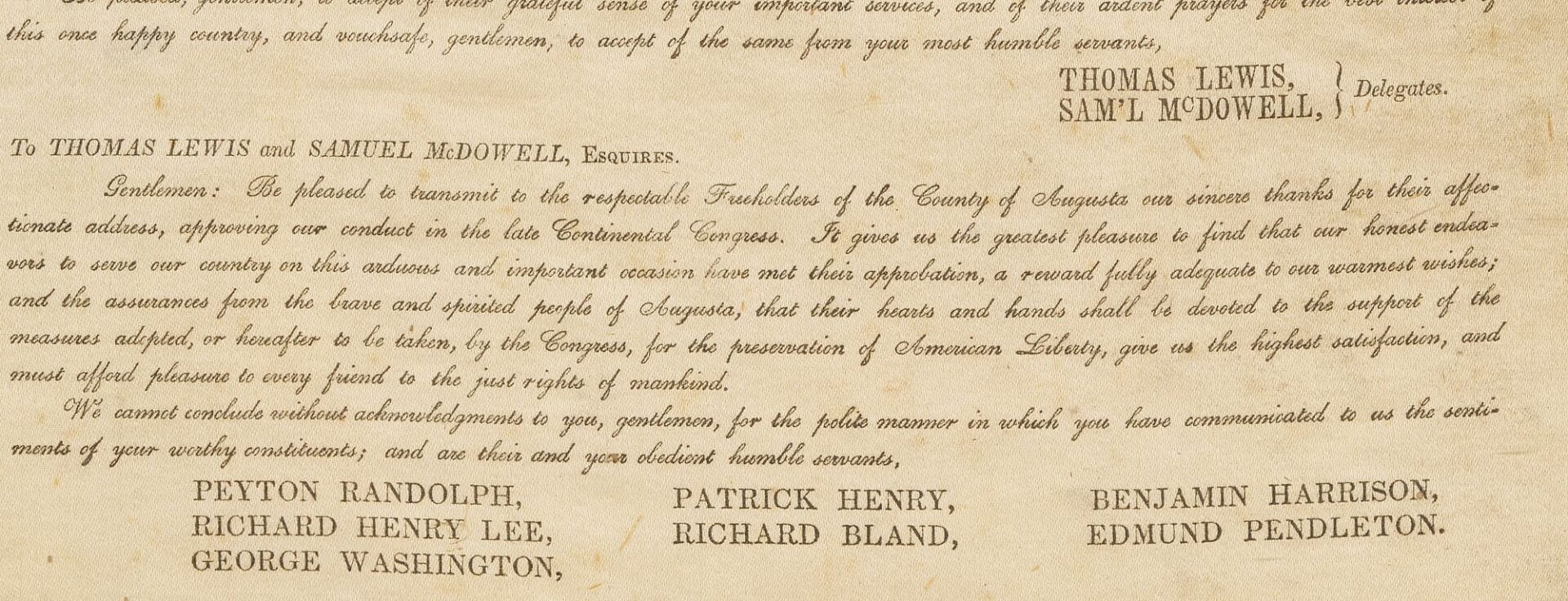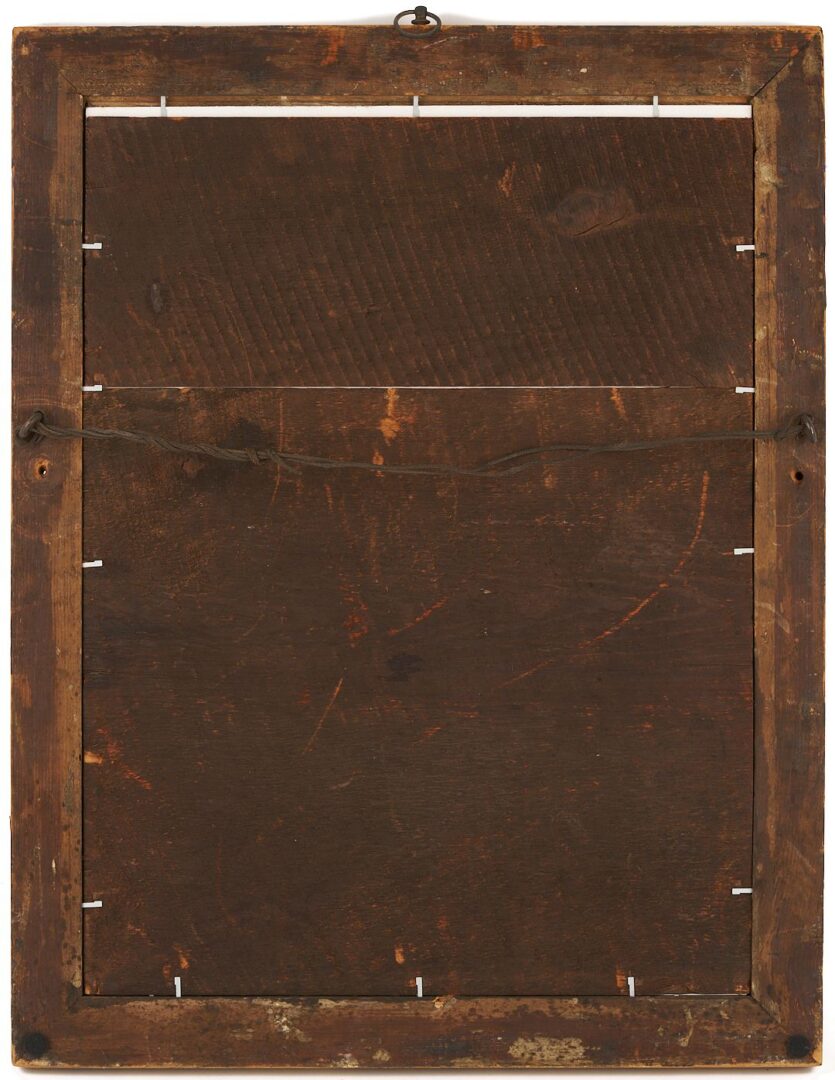SOLD! for $1,037.00.
(Note: Prices realized include a buyer's premium.)
If you have items like this you wish to consign, click here for more information:
Selling with Case- Low Estimate: $800.00
- High Estimate: $1,000.00
- Hammer Price: $850.00
- Share this:
Scarce printed broadside on silk, commemorating the “Augusta Resolves,” a declaration adopted February 22, 1775 by six representatives of Augusta County in Colonial Virginia, supporting Congress’s resistance to the Intolerable Acts during the buildup to the American Revolution. The Resolves were originally published in the Virginia Gazette, and if a manuscript version survives, its current whereabouts are a mystery. This early “original copy” from an unknown printer, is believed to date as early as 1830 and possibly as late as 1876. It is one of only three such known and the only one currently not in an institutional collection. The silk broadside has been mounted to a cream backing, likely later, under glass, in a period silver-gilt molded wood frame. Sight: 20 in H x 14 1/4 in W. Frame: 23 3/4 x 18 1/4 in .
The Intolerable (or Coercive) Acts were issued 1774 by the British Parliament to punish Massachusetts for the Boston Tea Party. The Acts served to further restrict colonial autonomy and trade. In response, representatives from 12 of the 13 colonies convened in Philadelphia in the autumn of 1774 to form the Continental Congress, petitioning the King of England for the same rights as Englishmen. As tensions rose, the Royal Governor of Virginia dissolved the House of Burgesses, and several communities in Virginia spoke out by publishing rhetorical resolutions, also known as “Resolves.”
In February of 1775, the six authors of the Augusta Resolves (Rev. Alexander Balmain, Sampson Mathews, Capt. Alexander McClannahan, Michael Bowyer, William Lewis and Capt. George Mathews) met in a tavern in Staunton, VA and adopted a platform in support of “the free exercise of conscience and of human natures” noting “These rights are fully resolved, with our lives and our fortune, inviolably to preserve…” The Resolves expressed respect for England and hope to repair relations with the Mother Country, but also pledged a commitment to risk “life and fortune”, and an intention to ally with other colonies if needed in order to secure these rights – along with a pointed recommendation to the militia officers of all counties to make themselves “masters of military exercises.” Some historians have suggested the Augusta Resolves and similar resolutions from other areas were forerunners of the Declaration of Independence, which was ultimately issued by the Second Continental Congress on July 4, 1776. And George Washington is said to have been inspired by the revolutionary spirit behind these resolves, saying “Strip me of the dejected and suffering remnants of my army; take from me all that I have left; leave me but a banner; give me but the means to plant it upon the mountains of West Augusta, and I will yet draw around me the men who will lift up their bleeding country from the dust and set her free.” (Thomas Preston: Historical Sketches and Reminiscences of an Octogenarian, Richmond, VA: B.F. Johnson Publishing Co. , 1900, pp. 23-24). (Additional sources: The Frontier Culture Museum and Waddell, Joseph A, Annals of Augusta County, Virginia, 1886).
PROVENANCE: Discovered in an Alabama estate sale.
CONDITION: Broadside is in fragile condition with shattering to silk across upper third, with losses, and along top edge. Dampstaining to lower left edge side and bottom edges. Other scattered areas of discoloring and staining.
